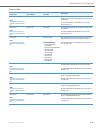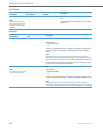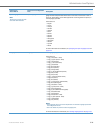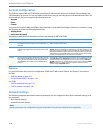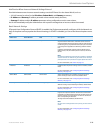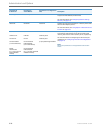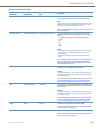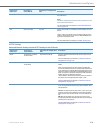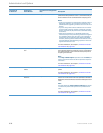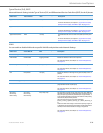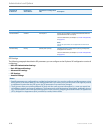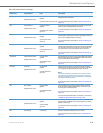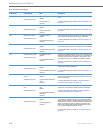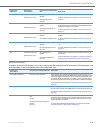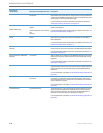
Administrator Level Options
41-001343-02 REV04 – 05.2014 3-32
HTTPS Settings
Advanced Network Settings includes HTTPS settings for the IP Phones.
N/A TURN Password sip turn pass Password that a user must enter when accessing an account on
the TURN server.
Note:
The NAT IP configuration parameters take precedence over the
STUN and TURN parameters.
For more information, see Chapter 4, “STUN and TURN Proto-
cols” on page4-29.
N/A Rport (RFC 3581) sip rport Allows you to enable (1) or disable (0) the use of Rport on the IP
phone.
“Rport” in RFC 3581, allows a client to request that the server
send the response back to the source IP address and the port
from which the request came.
For more information, see Chapter 4, “RPORT” on page4-52.
Parameter In
IP Phone UI
Parameter in
Aastra Web UI
Parameters in Configuration
Files
Description
HTTPS HTTPS Server - Redirect
HTTP to HTTPS
https redirect http get Allows or disallows redirection from the HTTP server to the
HTTPS server.
For more information, see Chapter 4, “HTTPS Client/Server
Configuration” on page4-33.
XML HTTP POSTs HTTPS Server - Block XML
HTTP POSTs
https block http post xml Enables or disables the blocking of XML scripts from HTTP
POSTs.
Some client applications use HTTP POSTs to transfer XML
scripts. The phones’s HTTP server accepts these POSTs even if
server redirection is enabled, effectively bypassing the secure
connection. When this parameter is enabled (blocking is ena-
bled), receipt of an HTTP POST containing an XML parameter
header results in the following response:
“403 Forbidden”. This forces the client to direct the POSTs to
the HTTPS server through use of the “https://” URL.
For more information, see Chapter 4, “HTTPS Client/Server
Configuration” on page4-33.
Client Method HTTPS Client Method https client method Defines the security method that the client advertises to the
server during the Secure Socket Layer (SSL) handshake. Avail-
able options are:
TLS 1.0 - Transport Layer Security version 1 (TLS 1.0) is a pro-
tocol that ensures privacy between communicating applica-
tions and their users on the Internet. TLS is the successor to
SSL.
SSL 3.0 - Secure Socket Layer version 3 (SSL 3.0) is a com-
monly-used protocol for managing the security of a message
transmission on the Internet.
For more information, see Chapter 4, “HTTPS Client/Server
Configuration” on page4-33.
Parameter In
IP Phone UI
Parameter in
Aastra Web UI
Parameters in Configuration
Files
Description



